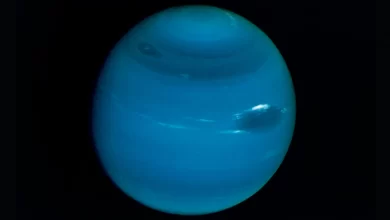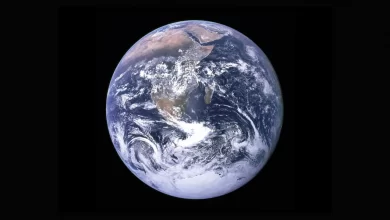Mars, the fourth planet from the Sun, possesses two small moons known as Phobos and Deimos. These moons, discovered in 1877 by American astronomer Asaph Hall, are irregularly shaped and have unique characteristics. Phobos, the larger of the two, orbits Mars at a close distance and is gradually spiraling inward due to tidal forces, making it one of the fastest-approaching moons in the solar system. Deimos, smaller and more distant, orbits Mars in a more stable manner. Both moons are thought to be captured asteroids, and their origins remain subjects of scientific study and speculation. Their presence adds to the intriguing nature of Mars and provides opportunities for further exploration and understanding of the Martian system.
- Phobos and Deimos were discovered by American astronomer Asaph Hall on August 12 and 18, 1877, respectively, using the United States Naval Observatory’s 26-inch Alvan Clark refracting telescope.
- Phobos and Deimos are named after the sons of the Greek god Ares (Mars in Roman mythology). Phobos means “fear” or “panic,” and Deimos means “dread” or “terror.”
- Phobos is the larger of the two moons, with a diameter of about 22.2 kilometers (13.8 miles), while Deimos is smaller, with a diameter of about 12.4 kilometers (7.7 miles). Both moons are irregularly shaped and resemble potatoes.
- Phobos orbits Mars at a very close distance of about 9,378 kilometers (5,827 miles) above the Martian surface. Deimos orbits Mars at a greater distance of about 23,460 kilometers (14,577 miles).
- Phobos has a very short orbital period of about 7 hours and 39 minutes, completing multiple orbits around Mars in a single Martian day. Deimos has a longer orbital period of about 30.3 hours.
- Both Phobos and Deimos are tidally locked to Mars, which means they always show the same face to the planet as they orbit.
- The most widely accepted theory about the origin of Phobos and Deimos is that they are captured asteroids from the asteroid belt between Mars and Jupiter. Their irregular shapes and small sizes support this hypothesis.
- Images of Phobos and Deimos reveal cratered surfaces with varying levels of brightness and darkness. Phobos has a large crater called “Stickney” on its surface, likely caused by a collision.
- The low gravity of Phobos and Deimos presents challenges for surface exploration. They have been considered as potential locations for future space missions and even potential bases for further exploration of Mars.
- Due to the tidal forces exerted by Mars, Phobos is gradually spiraling inward at a rate of about 1.8 centimeters (0.71 inches) per year. It is expected to eventually disintegrate or crash into Mars within tens of millions of years.
- Observing Phobos and Deimos from Mars’ surface is quite different from observing Earth‘s moon. Because of their close orbits, both moons rise in the west and set in the east.
- While numerous missions have explored Mars, only a few missions have provided close-up observations of Phobos and Deimos. The Soviet Union’s Phobos program attempted to study Phobos in the late 1980s, but contact was lost with the spacecraft.
- In addition to Phobos and Deimos, there is speculation that Mars may have additional small moonlets or captured objects that have not been detected yet.
- Phobos, being close to Mars, casts a shadow on the planet’s surface. Observing the movement of this shadow has been used to estimate the moon’s orbital parameters.
- Deimos has a darker surface compared to Phobos, which might be due to a higher abundance of carbonaceous materials.
- While the capture theory is the most widely accepted explanation for Phobos and Deimos’ origins, alternative theories propose that they could be remnants of a larger moon that broke apart or formed from debris resulting from a collision with Mars.
- Phobos is about 1/9th the size of Earth’s moon, while Deimos is even smaller, about 1/27th the size of the Earth’s moon.
- Phobos and Deimos are visible from the surface of Mars. However, they appear much smaller in the Martian sky compared to how Earth’s moon appears from our planet.
- Due to their low altitudes and small sizes, both moons could potentially be impacted by debris from meteoroids and asteroids, which might create craters on their surfaces.
- Neither Phobos nor Deimos have substantial atmospheres. Their weak gravitational pull makes it difficult for them to retain gases around them.
- Various space agencies and organizations have expressed interest in exploring Phobos and Deimos further. Proposed missions include sample return missions, orbiters, and landers to study their composition and characteristics.
- The existence of two small moons makes Mars one of only two planets in the solar system with a twin moon system. The other planet is Pluto, which has five known moons.
- Phobos, due to its low gravity and proximity to Mars, has been suggested as a possible location for a space elevator in the future. The concept involves a cable extending from Phobos to Mars’ surface.
- The irregular and rapid movements of Phobos across the Martian sky intrigued early astronomers and were challenging to explain until the concept of an irregularly shaped moon in close orbit was understood.
- Over time, the orbits of Phobos and Deimos may change due to gravitational interactions with Mars. There is a small possibility that Phobos could collide with Mars before its predicted disintegration.
- Phobos and Deimos have captured the imagination of science fiction writers, featuring prominently in various stories set on Mars or in space.
- The study of Mars’ moons is of interest to astrobiology, as they could potentially host material ejected from Mars due to impacts, providing insights into the Martian surface and history.
- While no dedicated missions have been sent to explore Phobos and Deimos, the data collected by Mars orbiters and rovers provide valuable insights into the composition and dynamics of these moons.






